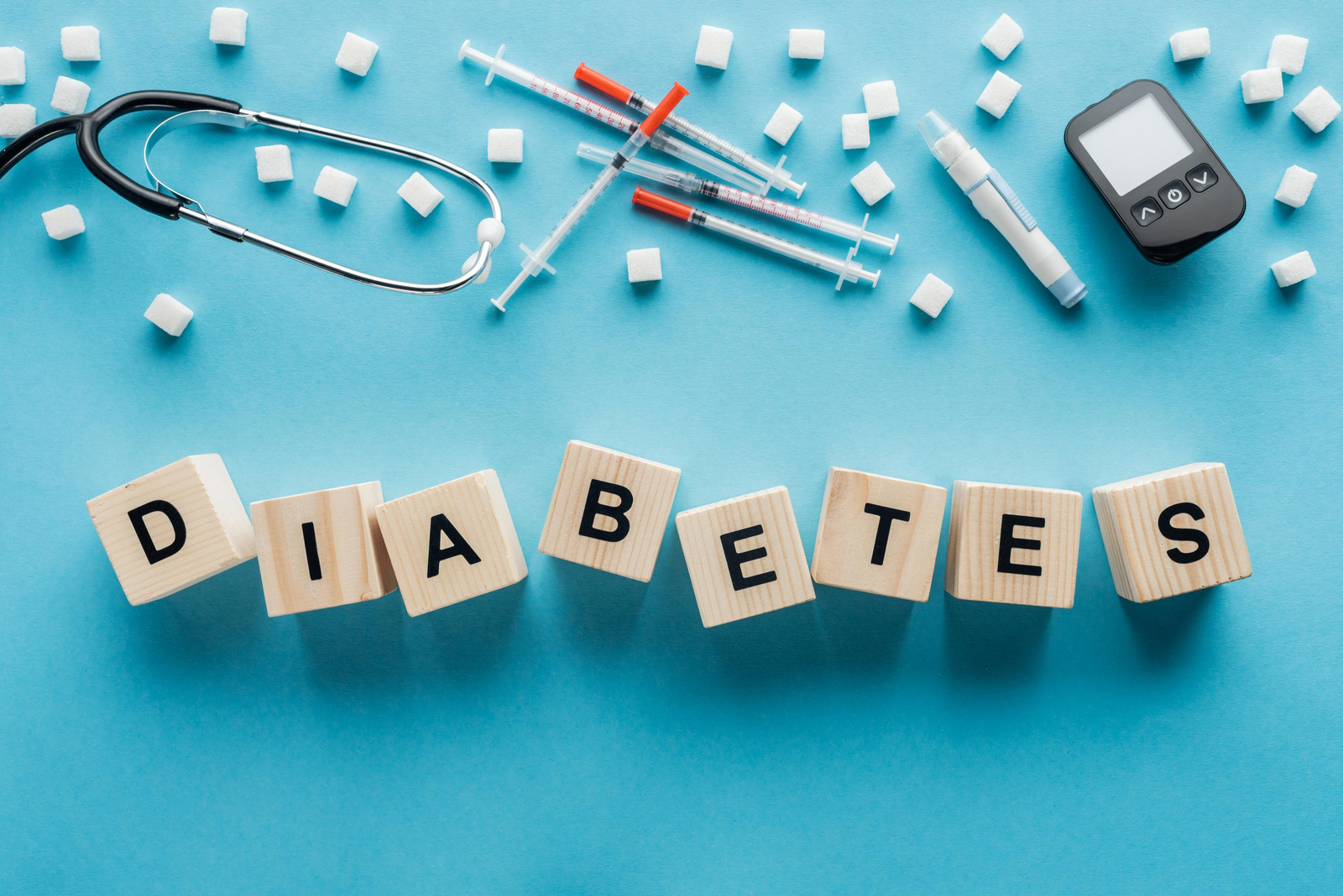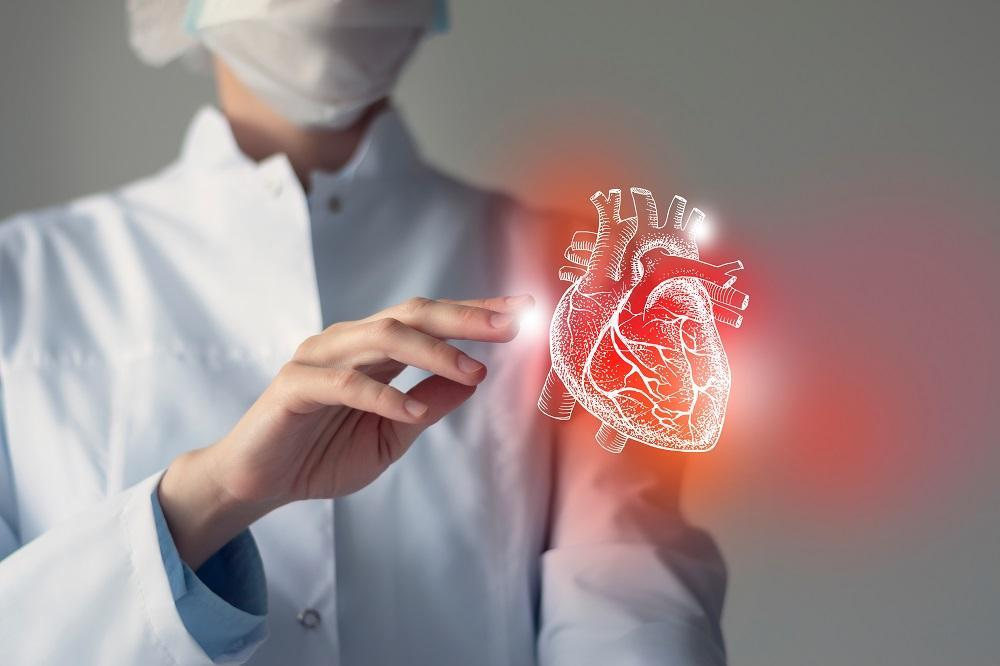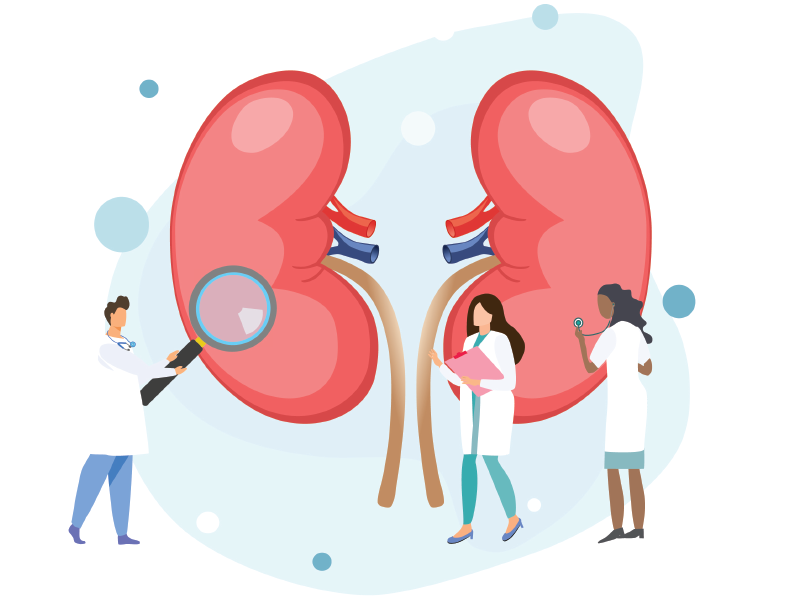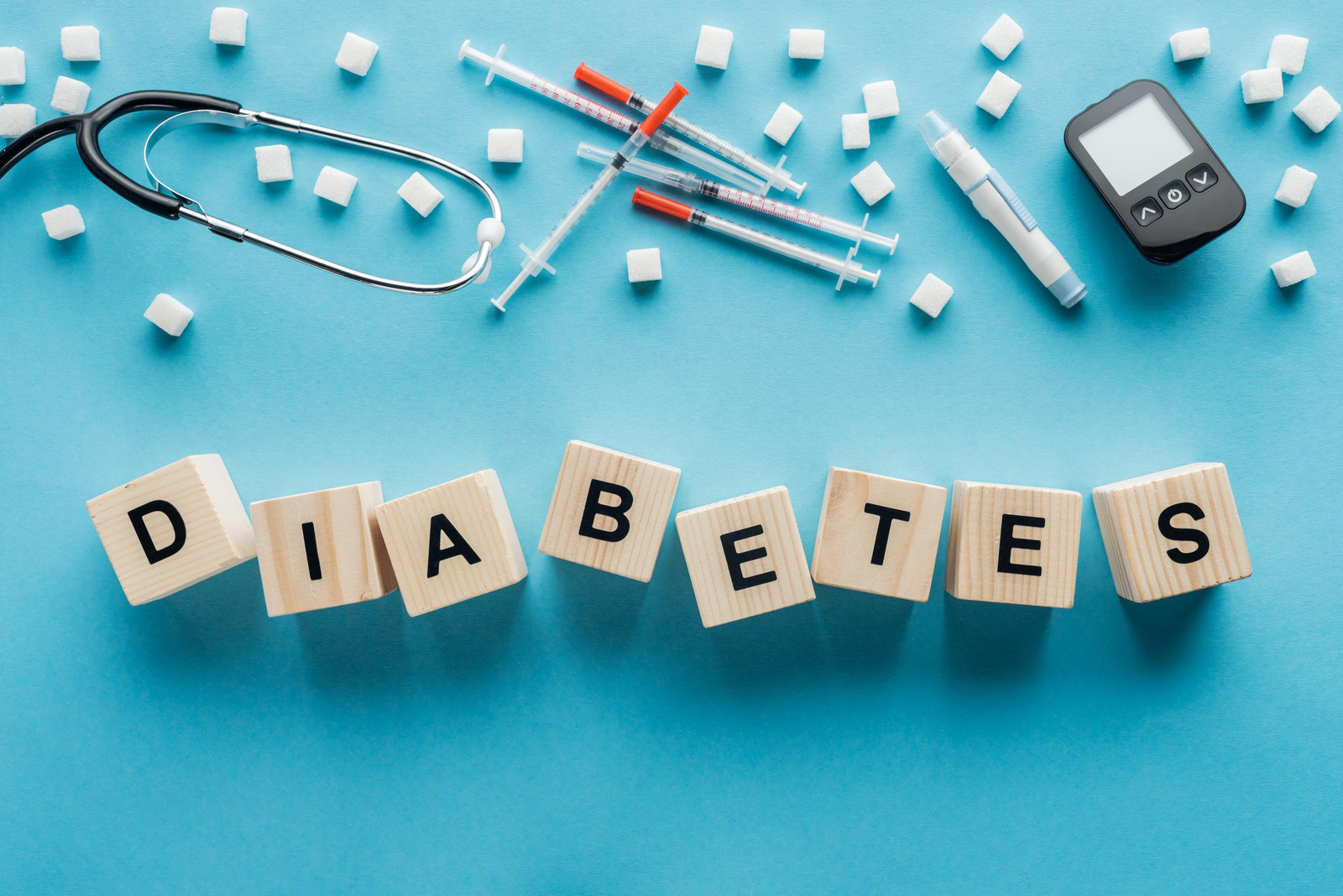Introduction:
Are you often plagued by unquenchable thirst, frequent trips to the bathroom, and a persistent feeling of fatigue even without exertion? These could be subtle signals of type 2 diabetes, a condition often dubbed the “silent epidemic.” In China, one in every eight adults lives with diabetes, but alarmingly, nearly half are unaware of their condition. Today, we delve into the world of type 2 diabetes, aiming to demystify this “sweet burden” and shed light on its impact.
Course Outline:
Definition and Mechanism of Insulin Resistance in Type 2 Diabetes
Global and Local Epidemiological Data
Classification of Diabetes and Characteristics of Type 2 Diabetes
Risk Factors and Possibility of Prevention
I. Definition and Mechanism of Insulin Resistance in Type 2 Diabetes
1. What is Type 2 Diabetes?
Type 2 diabetes is a metabolic disorder characterized by elevated blood glucose levels. Unlike type 1 diabetes, individuals with type 2 diabetes still produce insulin, but their body’s cells become resistant to its effects. This resistance is often referred to as “insulin resistance.”
Imagine insulin as a key that unlocks the cell doors, allowing glucose to enter and provide energy. In type 2 diabetes, this key becomes less effective, preventing glucose from efficiently entering the cells. Consequently, glucose accumulates in the bloodstream, leading to hyperglycemia.
2. How Does Insulin Resistance Develop?
Insulin resistance sets in motion a vicious cycle. Initially, as cells respond less effectively to insulin, the pancreas compensates by secreting more insulin to maintain normal blood sugar levels, a condition known as “hyperinsulinemia.” Over time, the pancreatic β-cells, responsible for insulin production, become overworked and eventually fail, resulting in a decline in insulin secretion and persistent high blood sugar.
Research conducted by Peking Union Medical College Hospital in Beijing has shown that free fatty acids and inflammatory cytokines released by abdominal fat tissue, particularly visceral fat surrounding internal organs, are significant contributors to insulin resistance. This explains why individuals with “beer bellies” are at a higher risk of developing diabetes.
3. The Progression of Type 2 Diabetes
Type 2 diabetes typically progresses through several stages: normal glucose tolerance → impaired fasting glucose or impaired glucose tolerance (prediabetes) → type 2 diabetes. It is crucial to note that the transition from prediabetes to a confirmed diagnosis of type 2 diabetes can span 10-15 years. This extended “latency period” presents a golden opportunity for intervention.
Studies have demonstrated that lifestyle interventions in individuals with prediabetes can reduce the risk of developing diabetes by 58%.
II. Global and Local Epidemiological Data
1. Global Diabetes Trends
According to the International Diabetes Federation (IDF) Diabetes Atlas, 10th edition, 2023, approximately 537 million adults worldwide are living with diabetes, and this number is projected to rise to 783 million by 2045. Among these, 90-95% have type 2 diabetes.
Annually, diabetes and its complications claim the lives of about 6.7 million people, equivalent to one death every five seconds. An even more concerning trend is the increasing prevalence of diabetes among younger individuals.
Historically, type 2 diabetes was termed “adult-onset diabetes,” primarily affecting individuals over 40. However, an increasing number of adolescents are now being diagnosed with the condition. Globally, around 120,000 individuals under the age of 20 are diagnosed with type 2 diabetes annually.
2. Diabetes in China
The diabetes epidemic is particularly pronounced in China. Data from the Chinese Center for Disease Control and Prevention’s 2023 National Chronic Disease Surveillance indicate that the prevalence of diabetes among Chinese adults has reached 12.9%, meaning one in every eight Chinese adults has diabetes.
More alarmingly, the proportion of individuals with prediabetes stands at a staggering 35.2%, translating to over 350 million Chinese individuals teetering on the brink of diabetes.
Compared to a prevalence of less than 1% in 1980, China has witnessed a more than tenfold increase in diabetes prevalence within just four decades. This surge is closely linked to China’s rapid economic development, urbanization, aging population, and adoption of Western lifestyles.
3. The Socioeconomic Burden of Diabetes
Diabetes not only poses a threat to individual health but also imposes a substantial economic burden on society. In 2023, the total cost of diabetes care in China exceeded 1 trillion yuan, accounting for approximately 13% of the nation’s total medical expenditure. Notably, treatment for diabetes complications constituted over 80% of this total cost.
On average, the annual medical expenditure for a person with diabetes is 2.3 times that of someone without diabetes. Factoring in indirect costs such as lost labor productivity and premature mortality, the socioeconomic burden of diabetes becomes even more significant.
III. Classification of Diabetes and Characteristics of Type 2 Diabetes
1. Major Classification of Diabetes
According to the latest classification standards of the Chinese Diabetes Society, diabetes is primarily categorized into four types:
Type 1 Diabetes: Characterized by autoimmune destruction of pancreatic β-cells, leading to absolute insulin deficiency. It often develops in childhood or adolescence but can occur at any age. Individuals with type 1 diabetes require lifelong dependence on exogenous insulin for survival.
Type 2 Diabetes: Characterized by a combination of insulin resistance and insulin secretory deficiency. This is the most common form of diabetes, accounting for 90-95% of all cases.
Gestational Diabetes: Diabetes diagnosed during pregnancy that was not clearly overt diabetes before pregnancy.
Specific Types of Diabetes: Including genetic defects in β-cell function, genetic defects in insulin action, diseases of the exocrine pancreas, drug- or chemical-induced diabetes, etc.
2. Clinical Characteristics of Type 2 Diabetes
The classic symptoms of type 2 diabetes include polyuria (frequent urination), polydipsia (increased thirst), polyphagia (increased hunger), and unexplained weight loss (often referred to as “the three polys and one less”). However, many individuals may not exhibit overt symptoms and are only diagnosed during routine medical checkups.
Unlike the acute onset of type 1 diabetes, type 2 diabetes has a gradual onset, with mild initial symptoms that are often overlooked. Statistics indicate that there is an average delay of 7-10 years from disease onset to diagnosis. This is why 30-50% of individuals already have chronic complications at the time of initial diagnosis.
It is important to note that individuals with type 2 diabetes often have other metabolic abnormalities, such as obesity, hypertension, and dyslipidemia, collectively referred to as “metabolic syndrome.” A survey conducted by the Endocrinology Department of Peking University People’s Hospital revealed that approximately 75% of individuals with type 2 diabetes also have hypertension or dyslipidemia.
3. Diagnostic Criteria for Type 2 Diabetes
According to the guidelines of the Chinese Diabetes Society, diabetes can be diagnosed if any of the following criteria are met:
Fasting plasma glucose (FPG) ≥ 7.0 mmol/L (Fasting is defined as no caloric intake for at least 8 hours)
2-hour plasma glucose ≥ 11.1 mmol/L during a 75-g oral glucose tolerance test (OGTT)
HbA1c (glycated hemoglobin) ≥ 6.5%
Symptoms of diabetes plus random plasma glucose ≥ 11.1 mmol/L
A1C ≥6.5%*, or
Fasting plasma glucose (FPG) ≥126 mg/dL (6.99 mmol/L)*, or
2-h plasma glucose (PG) ≥200 mg/dL (11.1 mmol/L) during an OGTT*, or
HbA1c ≥6.5%*, or
In a patient with classic symptoms of hyperglycemia or hyperglycemic crisis, a random plasma glucose ≥200 mg/dL (11.1 mmol/L)*
It is important to note that, except for random plasma glucose, the other criteria must be confirmed by repeat testing on a different day.
If you have a family history of diabetes, are overweight or obese, or are over 45 years old, it is recommended to undergo blood glucose screening at least once a year.
IV. Risk Factors and Possibility of Prevention
1. Unmodifiable Risk Factors
Age: The risk of developing type 2 diabetes increases with age. Individuals over 45 are at a higher risk.
Genetic Factors: Individuals with a family history of diabetes are at a significantly increased risk. If one parent has type 2 diabetes, the child’s risk is 40%; if both parents have the condition, the risk rises to 70%. Research from the Chinese Academy of Medical Sciences has found that compared to European and American populations, Asian populations can develop insulin resistance at lower BMI levels, which may be related to genetic factors.
Ethnicity: Different ethnic groups have varying risks. Asians, African Americans, Latinos, and Native Americans have a higher risk than Caucasians.
2. Modifiable Risk Factors
Obesity and Overweight: This is the most important modifiable risk factor for type 2 diabetes. Particularly, abdominal obesity (visceral fat accumulation) is a significant warning sign. Studies have shown that each kilogram of weight gain increases the risk of diabetes by 4.5-9%.
Unhealthy Diet: A diet high in calories, fat, sugar, and low in fiber is a major contributor to diabetes. Research by the Chinese Nutrition Society has shown that compared to traditional dietary patterns, a Western-style fast-food diet increases the risk of type 2 diabetes by 42%.
Physical Inactivity: A sedentary lifestyle contributes to insulin resistance. Engaging in at least 30 minutes of moderate-intensity physical activity daily can reduce the risk of diabetes by 30%.
Smoking: Smokers have a 30-40% higher risk of developing type 2 diabetes compared to nonsmokers.
Psychological Stress: Chronic stress can lead to sympathetic nervous system activation, increasing hepatic glucose output,抑制胰岛素分泌,升高血糖。
3. Effective Strategies for Preventing Type 2 Diabetes
Balanced Diet:
Follow the “three lows and one high” principle (low fat, low sugar, low salt, high fiber).
Sample Meal Plan:
Breakfast: Oatmeal (50g dry oats, cooked in water), 1 boiled egg, 3 cherry tomatoes, 200ml low-fat milk.
Preparation: Wash the oats and cook them in water until soft (about 5-8 minutes). Boil an egg (about 10 minutes). Serve with a few nuts (5-6 walnuts or almonds) for added satiety and nutritional value.
Lunch: Brown rice (100g cooked), steamed fish (100g), stir-fried vegetables (150g).
Preparation: Rinse and soak the brown rice for 30 minutes before cooking. Steam the fish with ginger, scallions, and a little cooking wine for 8-10 minutes. Quickly stir-fry the vegetables with a small amount of cooking oil and season with a little salt.
Dinner: Mixed grain porridge (15g each of millet, buckwheat, and red beans), cold tofu salad (100g firm tofu), smashed cucumber (1 cucumber).
Preparation: Rinse the grains and cook them together with water until a porridge consistency is reached. Blanch the tofu and season with a little soy sauce, vinegar, minced garlic, and coriander. Smash the cucumber and mix with a little salt and minced garlic.
Snacks: 1 apple, 10 walnuts, or 1 cup of yogurt (unsweetened).
Regular Physical Activity:
At least 150 minutes of moderate-intensity aerobic exercise per week, such as brisk walking, swimming, or cycling.
Sample Exercise Plan:
Brisk Walking:
Name: Moderate-intensity brisk walking
Equipment: Comfortable walking shoes
Duration: 30 minutes
Frequency: 5 days per week
Target Heart Rate: 60-70% of maximum heart rate (Maximum Heart Rate = 220 – Age)
Muscles Targeted: Lower body muscles, cardiovascular function
Tips: Maintain good posture, swing your arms naturally, take moderate steps, and land on your heels first.
Dumbbell Squats:
Name: Dumbbell Squats
Equipment: Dumbbells (2-3 kg for women, 5-8 kg for men)
Repetitions: 12-15 reps per set
Sets: 3 sets
Rest: 60 seconds between sets
Muscles Targeted: Quadriceps, glutes, core muscles
Instructions: Stand with feet shoulder-width apart, holding dumbbells at shoulder level. Keep your back straight and slowly squat down until your thighs are parallel to the floor, then slowly return to the starting position.
Seated Forward Bend Stretch:
Name: Seated Forward Bend Stretch
Equipment: None
Duration: Hold each position for 15-30 seconds
Sets: 2-3 sets
Muscles Targeted: Hamstrings, lower back
Instructions: Sit with legs extended. Slowly bend forward from the hips, reaching your hands towards your toes. Feel the stretch in the back of your legs and maintain even breathing.
Weight Management:
Maintain a BMI of 18.5-23.9 kg/m². Waist circumference should be less than 90cm for men and less than 85cm for women.
Losing 5-10% of body weight can significantly reduce the risk of diabetes.
Smoking Cessation and Limiting Alcohol:
Quit smoking completely.
Limit alcohol intake to no more than 25g of pure alcohol per day for men (approximately 750ml of beer) and no more than 15g for women (approximately 450ml of beer).
Regular Medical Checkups:
Individuals over 45 or with a family history of diabetes should have their fasting blood glucose checked annually.
Stress Management:
Learn relaxation techniques such as meditation, yoga, or deep breathing to maintain a positive mindset.
Adequate Sleep:
Ensure 7-8 hours of quality sleep per night.
Sleep deprivation (<6 hours/night) increases insulin resistance and the risk of diabetes. According to the “China Guidelines for the Prevention and Treatment of Type 2 Diabetes,” lifestyle interventions in high-risk populations can reduce the risk of developing diabetes by 40-60%, and this preventive effect can last for more than 10 years.
In essence, type 2 diabetes is a preventable and manageable chronic disease. By adopting a healthy lifestyle, you hold the key to preventing and controlling diabetes.
Type 2 diabetes is not a death sentence but a lifestyle-related disease. By embracing a healthier lifestyle, you can effectively prevent and manage this condition.




